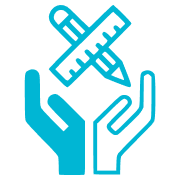Presentation

Welcome to the coordination and communication website of the SSHRC Partnership #895-2022-1003: Quality in Canada’s Built Environment: Roadmaps to Equity, Social Value and Sustainability.
Funded by the Social Sciences and Humanities Research Council of Canada until 2027, this research partnership brings together – for the first time – 14 universities, 70 researchers and 68 public and private organizations at the municipal, provincial and national levels.
The partnership is meant to stimulate a vital dialog demonstrating how those active in considering and creating the built environment across Canada can contribute to a redefinition of quality that moves us to heightened equity, more social value and greater sustainability at a critical moment for our societies and for our planet.
Coordinated, from the University of Montreal, by the Canada Research Chair in Architecture, Competitions and Mediations of Excellence (Prof. Jean-Pierre Chupin), the partnership addresses the diversity of public environments impacting the everyday life of millions of Canadians in urban spaces, buildings and landscapes.
The program has three aims:
- Analyzing the current limitations of environmental norms and sustainability models to bring us closer to the United Nations Sustainable Development Goals (SDGs).
- Co-designing new paths to equity, diversity and inclusion in the built environment.
- Define new definitions and application frameworks to improve the social value of the built environment through roadmaps to quality.
To achieve these objectives, the partnership brings together methodologically 4 sets of stakeholders concerned with the use, scientific study, planning, design, construction and management of built environments:
- Citizens (representatives of communities including minorities and underrepresented populations).
- Cities(national, provincial and municipal actors in the public procurement of built environments).
- Organizationsassessing quality (professional associations, award-granting institutions, councils, cities).
- Universities(interdisciplinary research teams).
For the first time and at an unprecedented scale in the design disciplines in Canada, the project gathers 14 universities including all of the schools of architecture as well as most landscape architecture and environmental design departments. It mobilizes 23 disciplines concerned with the impact of built environments on citizens. Sixty-eight partner organizations including national institutions and not-for-profit join in a conversation pertaining to 4 thematic clusters to address urgent considerations on quality relative to:
- Spatial justice and heightened quality of life.
- Integrated resilience, material culture and adaptative reuse.
- Inclusive design for health, wellness, aging and special needs.
- Processes and policies supporting the reinvention of built environments.
This extraordinary collaborative effort stimulates training, internships and connections between hundreds of students and communities of practice. The partnership engages in cross-sectoral co-creation of knowledge whose outcomes will take the form of “roadmaps to quality” (guidebooks, analyses of exemplary case studies, resources for design thinking and proposals for public policies, etc.). These constitute a bilingual Living Atlas of Quality in the Built Environment_ _set on a digital platform created with the support of the Canada Foundation for Innovation. Designed as a public forum on the social, economic and environmental value of quality, the Living Atlas offers open access to repertories of award-winning projects, case studies, comparative analyses, scientific resources and articles, interpretative didactic podcasts, analogical maps and visualizations.
Project Director:
- Jean-Pierre Chupin, holder of the Canada Research Chair, in Architecture, Competitions, Mediations of Excellence at Université de Montréal.
Project Administrative Coordinator:
- Dimitri Weibel, at Université de Montréal
Postdoctorants:
- Maria Patricia Farfan Sopo, at Université de Montréal
- Morteza Hazbei, at Unversité de Montréal
Members of the Steering Committee:
- Doramy Ehling, Rick Hansen Foundation
- Josie C. Auger, Athabasca University
- Terrance Galvin, Laurentian University
- Miriam MacNeil, PSPC
- Susan Speigel, OAA
- Sara Jacobs, University of British Columbia
- Nathalie Dion, Provencher Roy
- Robert Wright, University of Toronto
- Trishtina Godoy-Contois, Athabasca University
- Samantha Biglieri, Toronto Metropolitan University
SSHRC Partnership Grant # 895-2022-1003
To see the full list of official co-applicants, collaborators, and partners:
Link to the SSHRC platform:
https://www.sshrc-crsh.gc.ca/results-resultats/recipients-recipiendaires/2021/pg-sp-eng.aspx
Common principles

collaboration, responsibility, participation, and EDI (Equity, Diversity, and Inclusion) as well as respect for Indigenous knowledge:
Key Governance Objectives
- Ensure that the objectives of the partnership are met (Strategy)
- Ensure funds are being spent as intended (Financial Stewardship)
- Ensure partnership sustainability (Risk Management)
- Ensure the performance of the partnership (Steering Committee oversight)
- Ensure partnership culture and values (EDI + Indigenous Research + ethical frameworks)
The governance revolves around 3 vectors:
- Equitable and controlled sharing of financial resources (stewardship)
- Sustained and balanced engagement of each of the 4 groups of stakeholders across all sites
- Involvement, training and internship opportunities for students at all stages of the partnership



